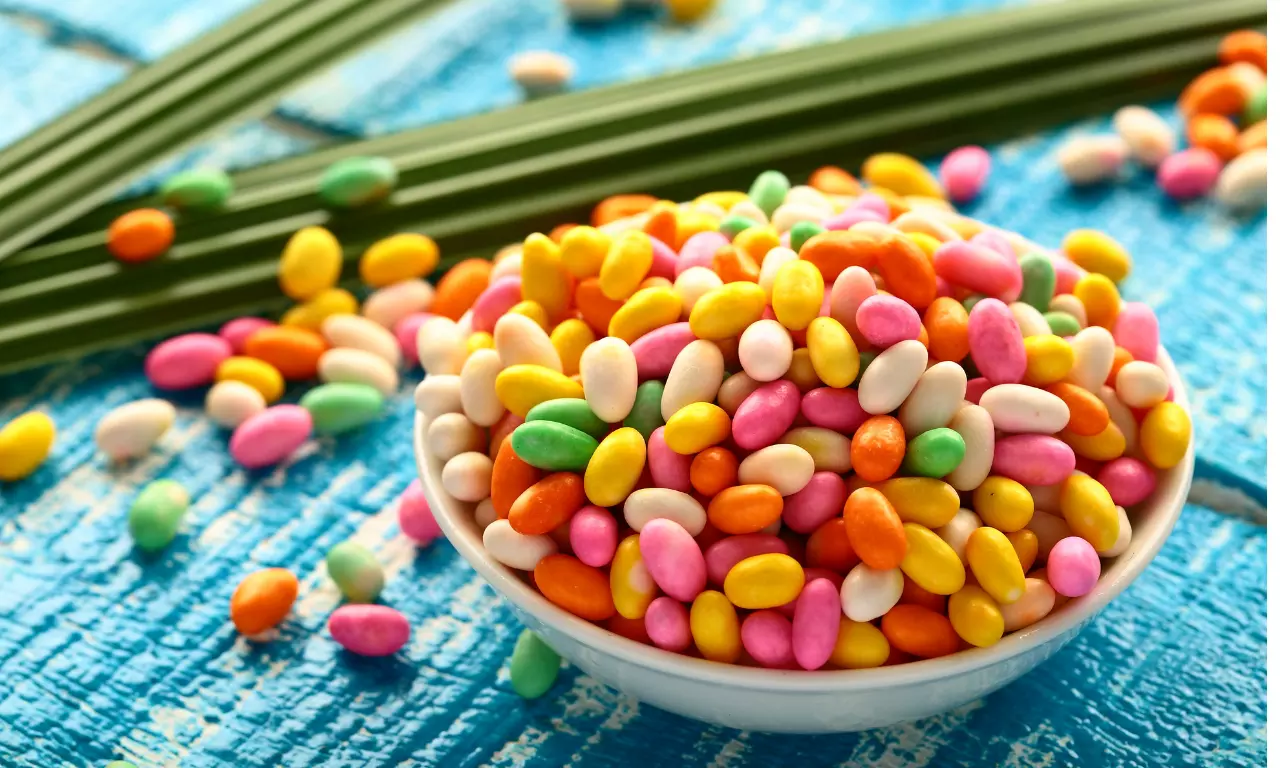Whatever happened to the wonderful tradition of ending meals with a fistful of mukhwas?
My love letter to the uber Gujarati culinary custom. Plus, some arguments on its nutritional benefits and significance in its defence
- By Manal DoshiLoading...
- | 9 Jun 2021 4:28 PM IST
 X
X
Recently, I came across a piece on the internet, where a writer named Eshani Surya, who is based out of Connecticut, US, talks about saunf, or fennel, as an inevitable part of her life. "It was just there," she writes. Thousands of miles away, sitting in Gujarat, I related to that sentiment deeply. To this day, there isn't a meal in my family home that doesn't end with mukhwas, which is what refreshments are called in Gujarati. Naturally, Surya's story piqued my interest, leaving me wanting to know more about its history, cultural significance in different regions of India, relevance in the Indian dining space and nutritional benefit.
Saunf and the other ingredients that go into making a mukhwas
Being the aromatic herb it is, no wonder the dried seeds of fennel are the base for most mukhwas preparations. To understand more, we reached out to food anthropologist, Kurush Dalal, who explained that India is the largest producer of fennel globally. Our country produces close to 1.4 million metric tonnes of fennel seeds every year as per Tridge's (a global sourcing hub that collects, organises and makes data related to the trading of food and agriculture) report of 2019. Adding to this he says that saunf is widely consumed across the country and the manner in which mukhwas is made also changes from one region to the other. Though, one of the most popular ones remains fennel seeds with sugar candy aka misri which is commonly served after meals in local Indian restaurants. However, variations of mukhwas in households include different ingredients like dhana dal or, split coriander seeds, and ajwain, which is carom seeds, sesame seeds, crystalline sugar, liquorice root powder, flax seeds, rose petals, cardamom powder, menthol, betel leaves, dill seeds and dried ginger powder. Sharing a fun anecdote about the cultural stories around mukhwas, Dalal tells us, "I remember trying a special mukhwas from Bengal, which was rumoured to have been made out of dried paan that the old ladies had chewed and spat out. Turns out it was only the appearance that led this rumour on."
The health benefits of eating mukhwas after meals
While the tradition of ending a meal with mukhwas is culturally significant in many communities, the ritual has health benefits too. Fennel and most variations of mukhwas are excellent for digestion and are known to help with gastrointestinal issues. Elaborating on this, nutritional consultant and recipe developer, Sangeeta Khanna tells us that even the simplest combinations of mukhwas, like fennel seeds and or palm candy, which is taal misri in local language, can help remedy E.coli, which is the root of several stomach infections. "Having fennel and palm candy also helps improve gut health and mukhwas made with dhana dal is cooling for the body," she adds. Recalling a family memory associated with paan and mukhwas, Khanna, who has roots in Uttar Pradesh, says, "I remember my grandparents having a silver paan-dan [a box to store all the ingredients required to make a paan]. Most elders in the family had this box and they would distribute paan to other members of the family, however, no one was allowed to touch it except them!"
Mukhwas as a part of the Indian dining space
Growing up in a middle-class family, one of my fondest food memories includes going to stand-alone restaurants with parents and ordering a few staples once every few weeks. As we walked out, there was always a bowl of either candy-coated or unroasted fennel seeds with sugar, sitting invitingly at the reception desk, and we remember sneaking fistfuls in stolen napkin papers to take back home. Dalal says that the practice of offering guests mukhwas at dining establishments in the '90s might have been put in place to allow guests to refresh their palates and to neutralise the strong flavour of Indian food. While some people mistake mukhwas to be a palate cleanser, Khanna clarifies that it is really more of a refreshing agent, due to the strong aromas that are inherent to all types of mukhwas. Though the culture of placing a bowl of saunf on the table at the end of a meal, when dining out, is waning from India's foodscape, it is preserved in smaller establishments, typically in Tier-2 and Tier-3 cities. Weighing in on what could have led to the slow disappearance of the custom, Dalal states it could be many reasons—from the increasing price of the fennel crop to it being a hygiene concern, especially amid the COVID-19 pandemic.
Our guess is that mukhwas faded away from the dining scene largely owing to its low position on the vanity meter. Imagine a high-end fine dine practising molecular gastronomy serving you a bowl of saunf at the end of your dinner! Be that as it may, as restaurants and chefs reclaim Indian food and reimagine it through a modern lens, who knows what might be next after the thepla taco. As for us, we don't care two hoots about judgement when it comes to food. And that's why you will find us lurking around our mothers every time she roasts her special variyali mix in a skillet and basking rather gleefully in the sweet aroma that it blankets our home in.

Manal Doshi
Manal is a gregarious and ambitious girl who talks about bread incessantly. Her penchant for writing and aesthetics transcends into everything she does. She loves researching the culture and history of things. When she's not writing, you can find her working on a dozen unfinished projects, and consuming an unhealthy amount of art.


